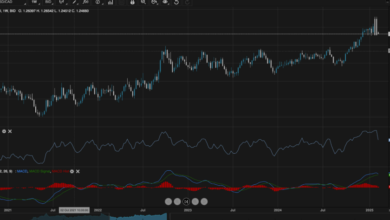
Gold has always been a preferred asset for investors, particularly during periods of uncertainty. However, trading it can be challenging, especially in volatile market conditions. The right approach is crucial for traders who aim to make the most out of these fluctuations. This article outlines some of the best strategies for profiting from trading in unpredictable markets.
1. Grasping the Fundamentals of Trading
Before exploring strategies, it’s essential to understand the fundamentals of gold trading. This involves buying and selling gold in various forms, including physical bullion, futures contracts, exchange-traded funds (ETFs), and contracts for difference (CFDs). Each method has its risk profile, and traders must decide which fits their financial goals and tolerance for risk.
In turbulent markets, gold’s value can swing sharply due to global economic trends, interest rate changes, and political events. By understanding how these external elements impact gold prices, traders can make informed decisions to maximise returns.
2. Diversify Your Gold Investments
Diversification is a crucial strategy across all forms of trading, and this market is no different. Rather than investing all your capital in one type of asset, consider spreading it across various categories. For instance, traders could allocate funds to physical assets, ETFs, or futures contracts.
Why is this approach practical in a volatile market? When one segment of the gold market faces a decline, another might perform well. Diversifying helps balance the overall risk and offers excellent stability to a portfolio, which is especially valuable when prices are unpredictable. Isn’t spreading the risk more reassuring than concentrating it all in one place?
3. Pay Attention to Investor Sentiment
Market sentiment—or how investors feel about the market—significantly influences the value of gold. During economic instability or political upheaval, investors often turn to gold as a safe store of value, driving up its price. Conversely, gold prices may decline during economic growth as other assets, like stocks, become more attractive during economic growth.
Being aware of market sentiment is a powerful tool for profitable trading. By watching financial news, data reports, and global events, traders can better anticipate value shifts. It’s not only about reacting to changes in sentiment but also forecasting them. Are you paying close enough attention to how these broader market trends might affect your trades?
4. Utilise Technical Analysis
Technical analysis is a valuable tool for serious traders. It involves analysing historical price data and market trends to predict future movements. When applied to this market, technical analysis can help identify optimal moments to enter or exit trades, particularly in fast-changing conditions. Popular indicators include moving averages, the Relative Strength Index (RSI), and Bollinger Bands, which can highlight potential buying or selling opportunities.
Technical analysis is essential in a volatile market. It helps traders spot short-term opportunities and avoid sudden price swings. These data-backed tools improve decision-making and reduce the risk of being caught off guard.
5. Keep an Eye on Global Events
One of the primary drivers of gold prices is global events. Political crises, economic downturns, and even natural disasters can all lead to significant shifts in the value of gold. This precious metal is often considered a refuge during times of uncertainty, meaning its price tends to rise when global stability is threatened.
To stay ahead in gold trading, it’s essential to be aware of significant world events that could impact the market. By doing so, traders can adjust their positions in response to global developments. Whether it’s a political conflict or an unexpected economic report, being prepared for sudden market changes can make a big difference in the profitability of your trades. Isn’t it better to anticipate changes than to be caught unprepared?
6. Lessening Risk with Stop-Loss Orders
Effective risk management is a cornerstone of successful trading, especially when markets are unpredictable. One critical method of managing risk is using stop-loss orders. A stop-loss automatically sells a position when the asset reaches a specific price, helping to limit potential losses. In volatile markets, stop-loss orders are instrumental, preventing traders from losing more than they’re willing to risk.
However, setting these orders too close to the current price could cause them to trigger prematurely, leading to missed opportunities. The balance lies in placing stop-loss orders at levels that offer sufficient protection while allowing for normal market fluctuations. While stop-loss orders can protect against significant losses, traders should also remain flexible. Markets can shift quickly, and adapting to changing conditions is essential.
If traders implement the right strategies, trading can be highly profitable, even in volatile markets. By mastering the basics, diversifying investments, paying attention to investor sentiment, and utilising technical analysis, traders can increase their chances of success. Keeping an eye on global events and using risk management tools like stop-loss orders also helps to protect against sudden market changes.




